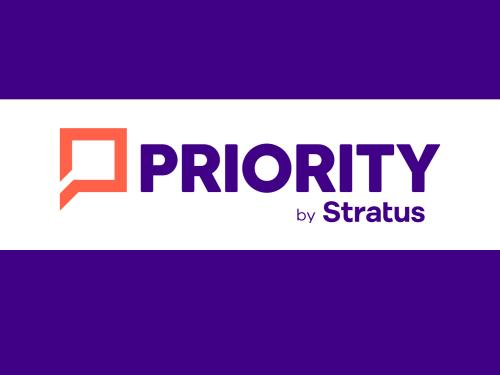Stratus Acquires Priority - Read More Here
Recommendations for Managing a Multi-Site Rebrand
At Priority, we deal with many companies that are in the early stages of preparing and executing rebrands. Revamping an entire organization’s signage portfolio is far from an everyday marketing project and with that many questions arise.

At Priority, we deal with many companies that are in the early stages of preparing and executing rebrands. Revamping an entire organization’s signage portfolio is far from an everyday marketing project and with that many questions arise.
Questions such as:
- What should you budget for this initiative?
- How long will it take to pull it off?
- How exactly should you go about creating a plan of action?
Once awarded a project we work with our clients to ensure a project is run smoothly from start to finish. Below are considerations we recommend prospective customers take when planning on undergoing a signage rebranding program:
- Strategic Planning – There are many departments that are affected when a rebrand is taking place. The marketing/corporate communications department often will take the lead as they are the owners of the brand. In addition, facilities, construction, and corporate real estate departments are stakeholders who will be impacted by the rebrand. We recommend that our customers maintain strong internal communication and make sure that their end goals are aligned.
- Real Estate Ownership – We recommend that our customers know the ownership status of their facility portfolios. Do they own or lease their real estate? How long has the signage been up? Will there be a need to heavily repair damaged walls?
- Logo Design Translation to Signage – Logo design is impactful on how well the brand will be communicated through signage. There are certain points to consider when evaluating logos and how well they will work on your signage. Fonts are important to consider as some with thinner strokes are harder to manufacture and some will be more difficult to appropriately illuminate. Colors, such as gradients, also have an impact on how well a logo will appear when used in signage.
- Sign Family Creation – Sign families are important in that they give visual and technical specifications for each type of sign. Technical specifications will break down the requirements for each sign, such as materials, electrical, illumination, etc… Sign families are also important because they work with brand guidelines to ensure that the entire signage portfolio is staying true to the brand’s identity. Additionally, Sign Families allow companies to have standard signage sizes in place. This is important because less artwork will need to be created and costs will be reduced.
- Surveys & Brandbooks – A large consideration to take when looking at vendors is their experience in surveying and creating brand books for each site. This is important so the client, as well as Priority, knows the existing signage makeup at each site and can see the sign recommendations that are given. This approval process is important to maintain transparency between you and your signage vendor.
- Prototyping – Prototyping is important because not all signs will work when manufactured. It’s important to consider prototyping to ensure that the materials that were chosen work, the illumination decisions are appropriate and the logo and letter spacing convert to signage appropriately. This is where those details that may have been overlooked can get
- Facility Portfolio – It’s crucial that our clients are aware of every site that is in their portfolio. In addition, it’s important to consider site-specific details (permitting requirements, local regulations, site prep, etc…)
- International Considerations – Many of our customers are multinational corporations that operate in various countries. When considering vendors it’s important to be sure that they have the capacity and network to handle a project of this scale. Also, it’s important to understand how your signage vendor audits their international partners within their network. This is crucial to ensure that capabilities and operating standards are maintained throughout the entire project.



